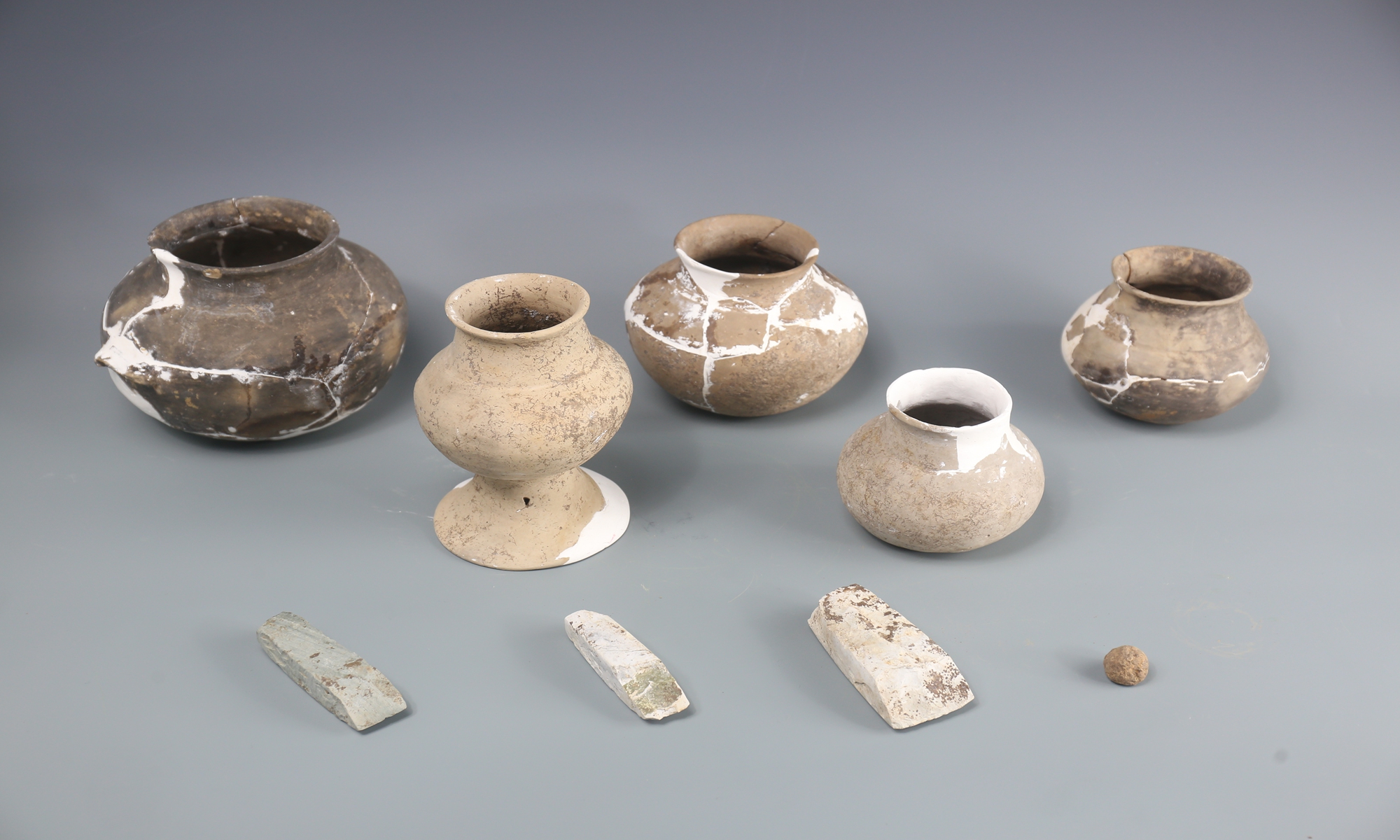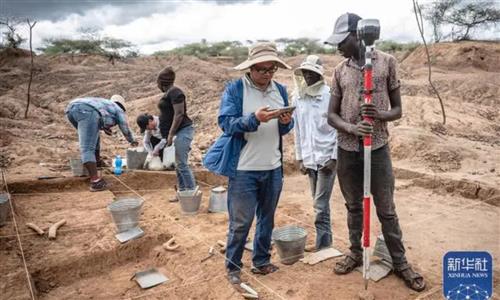ARTS / CULTURE & LEISURE
Archaeological discoveries illuminate early civilization in lower Yangtze River region

Pottery unearthed from the Xuecheng Ancient Culture Site in Nanjing, East China's Jiangsu Province in 2021 Photo: Courtesy of Nanjing Archaeological Research Institute
The Xuecheng Ancient Culture Site in Nanjing, East China's Jiangsu Province, has been dated to 6,300 years to 4,000 years ago, making it the oldest and the largest prehistoric settlement in the region, according to a Thursday report by the Modern Express, a Jiangsu based media outlet.
The discovery was announced on Thursday at a symposium where experts gathered to discuss the archaeological findings and the site's significance.
Spanning about 60,000 square meters, the site was first found in 1997 during the construction of a health center building.
Subsequent excavations have revealed a wealth of artifacts and features that help illustrate the lives of the region's ancient inhabitants.
Years of archaeological excavations and multidisciplinary research, combined with the latest carbon-14 dating have determined that the site dates back between 6,300 and 4,000 years.
The site can be divided into five periods: 6,300-5,800 years ago, 5,800-5,500 years ago, 5,500-5,300 years ago, 5,300-5,000 years ago, and 5,000-4,000 years ago, corresponding to the cultural timelines of neighboring regions.
The Xuecheng site marks the dawn of Nanjing civilization and is one of the key archaeological sites for exploring the origins of culture in Nanjing and the broader Jiangsu region.
It holds significant academic value for the study of Nanjing's cultural history and the exploration of early civilization development in the lower Yangtze River region, according to the report.
The site includes a range of settlement features, including houses, cooking pits, and storage pits.
Notably, the storage pits were arranged in a systematic and organized manner around the dwellings, many containing animal remains such as fish and shellfish, suggesting a close relationship with the abundant aquatic resources of the area.
Excavations have uncovered nearly 1,000 artifacts, including pottery, stone tools, bone tools, and jade items. One of the most remarkable discoveries at the site is a pile of clamshells made to look like a Yangtze alligator.
The alligator's head, positioned half a meter above the ground, is made from clamshells arranged to resemble eyes and a snout. Though the neck area is damaged, traces of clamshells remain, and the figure's back is notably raised, reaching a thickness of 0.2 meters. There is also a large tail measuring 3.34 meters in length and up to 0.5 meters in width.
Experts say this shell sculpture provides critical evidence for understanding the ecological environment of prehistoric Jiangnan (the region located in the coastal area south of the Yangtze River), as well as the region's early spiritual beliefs, including animal worship and the origins of dragon imagery in Chinese culture.
The Xuecheng site also contains evidence of ritual practices, including a rectangular platform constructed from pure yellow soil.
This platform, which has five ritual pits, was likely used for sacrificial ceremonies. Four of the pits contained pig bones, while the fifth pit contained clamshells, providing further evidence of the prehistoric community's spiritual practices.
Another significant discovery at the site is a carefully planned and long-used cemetery, which contains 253 tombs arranged in dense clusters.
Some graves contain more burial goods than others, indicating a social hierarchy. The well-preserved human remains found at the site are rare and offer valuable physical anthropology data for the study of prehistoric populations in southern China.
Archaeologists at the symposium also noted similarities between the Xuecheng site and other nearby prehistoric sites, highlighting the prehistoric cultural exchange and integration between the northern and southern regions of ancient China.
These findings at the site are crucial for understanding the origin and early development of Chinese civilization.
In December 2023, the Xuecheng site was officially designated as one of the first provincial-level archaeological site parks in Jiangsu. Plans are underway to develop the site into a national archaeological park.



